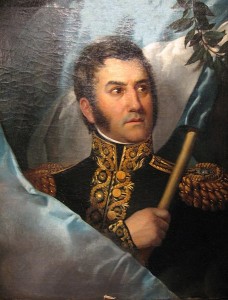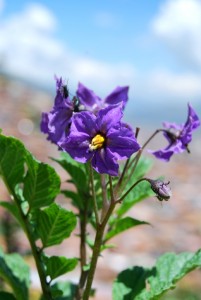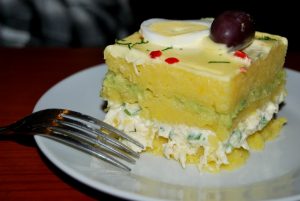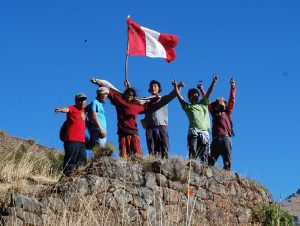Sacred Meaning Doubled and Layered, Peru’s Causa

A mystery, language is clear like a moonlit night and shrouded in dense fog all at the same time. The name of a popular Peruvian dish, causa a la limeña, is an excellent example. A terrine-like dish involving a layer of mashed yellow potatoes, a filling, and at least one more layer of potatoes, it forms part of the canon of Peruvian cuisine and its name suggests an entire world of complexity, one that can be quite intimate.
The Wikipedia article on causa gives us a first layer of complexity. It claims the name comes from the Quechua verb kausay, which it defines as “necessary sustenance or food”. It then says there is an alternative etymology that comes with a myth of origin, and not just a word.
The argument goes that though the dish existed in colonial Peru it was nameless and void, just eaten. At the time of the revolution against Spain, the Liberator José de San Martín came from the south and wrested Peru from the Spanish grasp. He said “From this moment Peru is free and independent due to the general will of its peoples and the justice of its cause which God defends.” With those words, like in Genesis, Peru as a republic came into existence. And the cause God defends is, in Spanish, causa–very similar to the English cause. That word became from that moment on the denomination of the dish.

As a result, a layering of potatoes and filling stands not only for the country, Peru, but for its cause and its divine defense. This is a powerful statement.
It takes the first layer, kausay and mashes it along with the potatoes. Generally glossed as life or to live, often matched today with good, as in sumaj kausay, a model of how life should be, the good life. It suggests a model for living a way of being that is moral and optimal.

However, in the mashing this idea became reduced to food, nutrition, nourishment. The complexity of life with its entailed obligations and ethics condenses as a symbol into eating. It becomes a dish of mashed potatoes layered with a filling.
But then it is more. Kausay is Quechua, the dominant language of indigenous Peru, a symbol like the potato, of something that comes from the earth and makes life possible in Peru’s dramatic landscape. However, that indigenous existence from the ground is not enough, it must be made into something more through foreign intervention.

In this case it must be attached to a cause, just like the life of its people, a cause that joins the heavens and the earth, in this case the cause of the now free, modern, Republic of Peru. Its land becomes a country with a nationality, a flag, and patriotism as an ethos. The humble potato when mashed and layered with fillings becomes a symbol of it and an image of the country as nourishment, something that fills the soul and the belly.
When I first read the Wikipedia article and saw the double etymology, I was cynical. The Spanish etymology seems so spurious. But then the anthropologist in me kicked in and push aside the Western pedant who insists on single origins. Once that happened, I felt a burst of understanding.
Causa, a humble yet masterful dish, has a dual etymology–one makes sense to me and one feels forced, but together they are like ancient Cuzco, an Imperial city with two narratives, according to Isabel Yaya. One is that of the upper moiety, the foreigners who came and the other is that of the lower half of natives. One is the wet season story of the sun and the other the dry season narrative of the same, and in that is a model of the seasons alternating one after the other, like the layers of a causa, a terrine. Just like ancient Cuzco, the humble dish now has two stories layered together, a model of a country that is both Spanish and Indigenous simultaneously in layers like this dish.

The indigenous model is that of the cosmos, an external world in which we live, and a world within from which life, like potatoes, comes. This in turn serves as a model of how one should live in layers that are distinct while mutually dependent. In that is kneaded not just a description but also an ethic of how one should live the good life, that is in ayni, in dependent distinctness and mutual service.
In fact, the word causa takes on another meaning in ordinary Peruvian Spanish. There it means friend or mate. It is like the word broder, from the English brother, or wayki, from the Quechua wauqey for brother. They are all used, along with the word cholo to address a mate or friend. As such, they make a claim on them as well as an observation.
The other model is that of the divine cause, like the sunbursts of sliced boiled egg that decorates it or the tart olives with their dense seed that contrast. They repeat the inner message of kausay but now are the Spanish cause, located in the world of Plato and the Hebrew god.
A causa served up, then, is so much more than simply one dish among an infinity of creations a chef can make. By its very name it resonates a deep set of meanings that makes it central to Peru.





